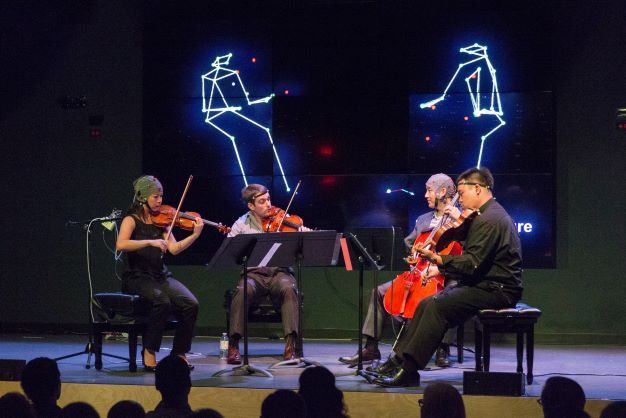
About LIVELab
The LIVE (Large Interactive Virtual Environment) Lab is a unique 106-seat Research Performance Hall designed to investigate the experience of music, dance, multimedia presentations, and human interaction.
The space includes Active Acoustic Control; Sound Recording Equipment; and measurement of Behavioural Responses, Movement (motion capture), Brain Responses (EEG), Muscle Tension (EMG), Heart Rate, Breathing Rate, and Sweating Responses (GSR).
The aims include:
- A neuroscientific understanding of how performers interact, what moves audiences during a performance, and the cognitive, social and emotional impact of these experiences;
- Incorporating technology and real-time audience feedback into creative performances;
- Development and evaluation of new technologies for health (e.g., hearing aids, dance for Parkinson’s) and artistic expression;
- Neuroscientific evaluation of human responses (e.g., market research; defining important aspects of culture) and what makes for successful human interactions (e.g., educational techniques, group problem solving).
Research in the LIVELab is aimed both at theoretical understanding and applications to business, health, education public policy, and artistic creation.
To find out more about the lab, or to book a meeting to see what the LIVELab can do for you, Contact Us today.
Please visit: McMaster LIVELab Website
About The McMaster Institute For Music And The Mind (MIMM)
The McMaster Institute for Music and the Mind (MIMM) fosters collaboration among dozens of scientists, researchers and musicians. Together, we explore fundamental questions about the neurological impact and benefits of music, dance and the arts.
Our interdisciplinary group of researchers includes psychologists, neuroscientists, music theorists, musicians, dancers, media artists, mathematicians, kinesiologists, health scientists and engineers.
We share a passion for finding answers to questions about the physical structure, evolution, neural processing, performance, and perceptions. Specific questions concern how the auditory and motor systems interact to produce music, how performers synchronize with each other, how people encode and recognize music, and how groups in society are defined by the music they play.
Critically, the developmental neuroscience perspective informs the research community on how music induces emotional reactions, how musical experience and training affect brain development, and how musical training/exposure affects language, cognitive, and social abilities in both children and adults.
Laurel Trainor
Director
Please visit: MIMM Website
